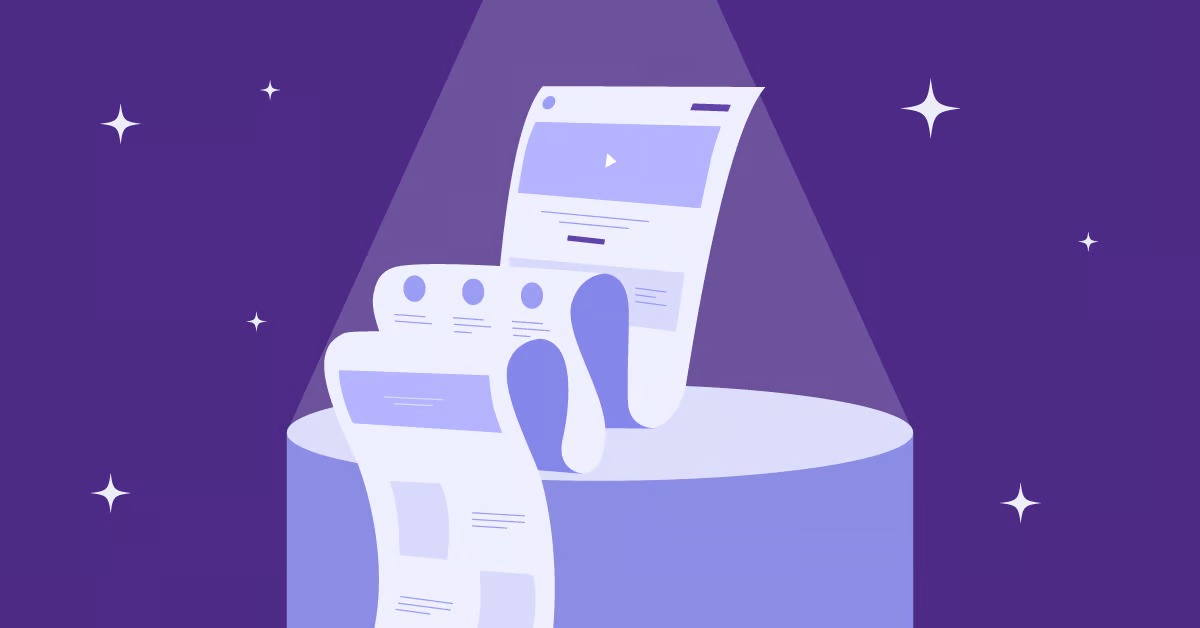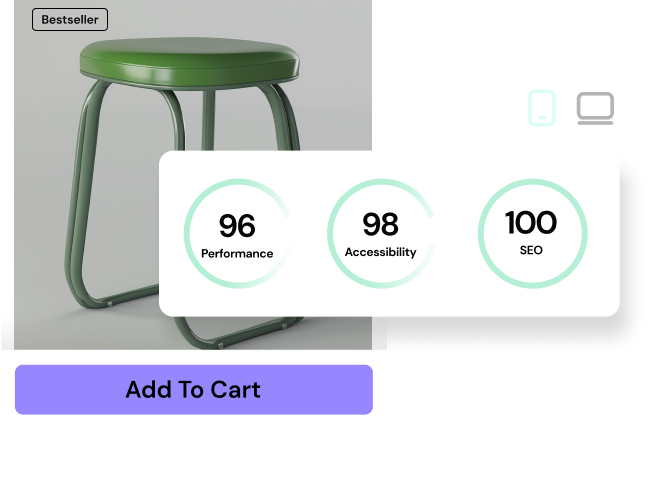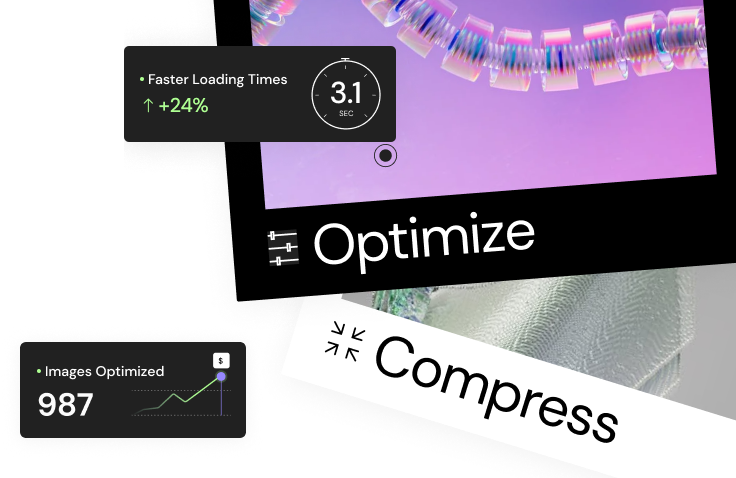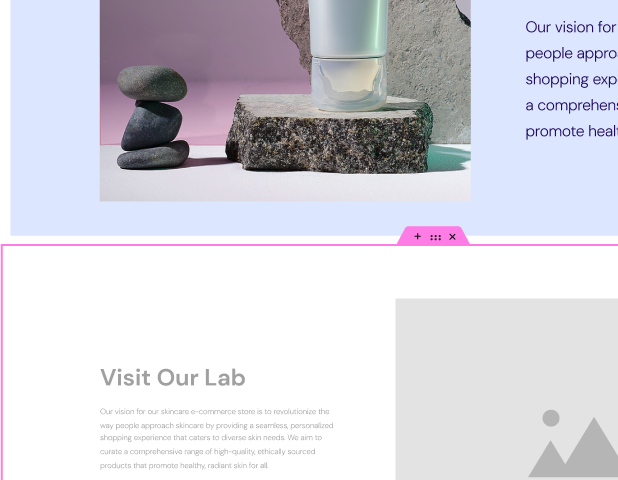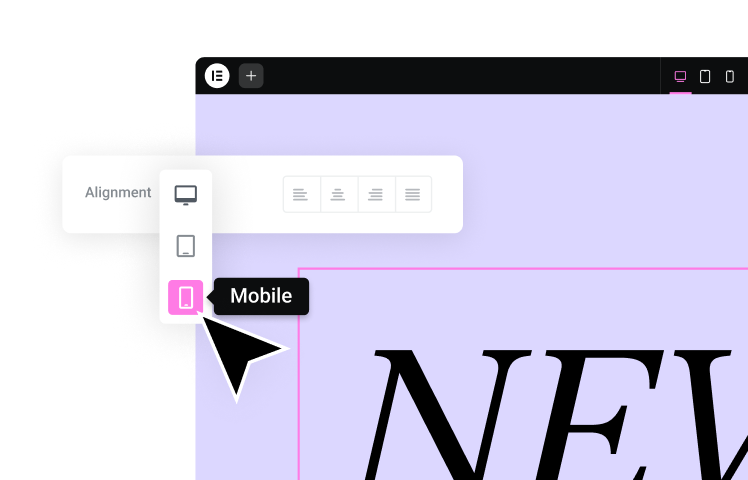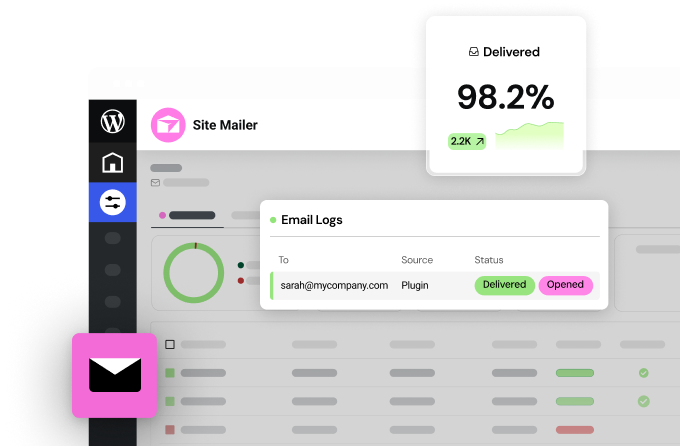Table of Contents
Figuring out web design costs can take time and effort. Many factors affect the price, and it’s easy to get confused by all the options. This guide will help you understand web design packages, pricing examples, and what influences the final cost.
Whether you’re starting your first online business or updating an existing site, knowing about web design pricing is key. We’ll examine common price ranges and package types and give you the information you need to make smart choices that fit your budget and goals.
Let’s clear up the confusion about web design pricing and help you create a great website that showcases your brand and grabs people’s attention without spending too much.
Understanding Web Design Packages
Web design packages are like set menus at a restaurant. They group together services and features for a fixed price, making it easier and often cheaper to build a website. These packages act as a plan for your website project, laying out the main things you need for a working, good-looking site that fits your needs.
Most packages include basic services like design, development, and setting up a content management system (CMS). They also cover extras like registering a domain name, hosting, search engine optimization (SEO), and ongoing upkeep.
Why Choose a Web Design Package?
Web design packages have several perks that make them a good choice for many businesses and individuals. First, you get clear pricing. You know the cost upfront, which helps you plan your budget and avoid surprise expenses.
Second, the process is smoother. The work and what you’ll get are clearly spelled out from the start, which helps keep the project on track. Lastly, it’s cost-effective. Buying services in a package is often cheaper than getting each service separately.
Types of Web Design Packages
Web design packages usually come in different levels to suit various needs and budgets. Basic packages cover the essentials for simple websites or single pages. They typically include basic design templates, a few web pages, and simple features like contact forms and photo galleries.
- Standard packages are for businesses that want a stronger online presence. They often include everything in the basic package, plus a blog, social media integration, and basic SEO work.
- Premium packages are for businesses that need a full-featured website. They usually offer everything in the standard package plus online store capabilities, custom design elements, and extensive content creation help.
Remember, the goal is to find a package that gives you the features you need without paying for extras you won’t use.
Factors Affecting Web Design Pricing
The cost of web design can vary widely based on several key factors. Understanding these can help you better estimate what you might need to budget for your project.
1. Website Complexity
The more complex your website, the more it will likely cost. A simple brochure-style site with a few pages will be less expensive than a large e-commerce site with hundreds of products. Interactive features, custom functionality, and complex layouts all add to the cost.
2. Design Customization
If you’re happy with a pre-made template with minor tweaks, your costs will be lower. But if you want a unique design that perfectly matches your brand, expect to pay more. Custom designs take more time and skill to create.
3. Content Creation
Some web design packages include content creation, while others assume you’ll provide the content. If you need help with writing, photography, or video production, this will increase the overall cost. High-quality content is crucial for a successful website, so don’t skimp here if you need help.
4. Responsive Design
Nowadays, it’s essential that your website looks good and works well on all devices—from desktop computers to smartphones. Most modern web design packages include responsive design, but it’s worth confirming this as it can affect both cost and performance.
5. E-commerce Functionality
If you plan to sell products or services directly through your website, you’ll need e-commerce features. This adds another layer of complexity to your site, including product catalogs, shopping carts, and secure payment processing. E-commerce functionality typically increases the cost of web design significantly.
6. SEO and Marketing Features
Some web design packages include basic search engine optimization (SEO) to help your site rank better in search results. More advanced marketing features like email integration, social media management tools, or advanced analytics might be offered in higher-tier packages or as add-ons.
Consider these factors to get a clearer picture of your website’s cost. In the next section, we’ll look at some specific pricing examples to give you a ballpark idea of what to expect.
Breakdown of Web Design Package Pricing
Let’s explore the typical price ranges for different types of web design packages.
Basic Web Design Packages
Basic web design packages are the starter option. They work well for people or small businesses with tight budgets and simple website needs. These packages often cost between $500 and $2,000, but prices can change based on who’s making your site and what features you get.
What You Get:
A basic package usually gives you a pre-made design with some room for changes. You’ll typically get a few key pages, such as home, about us, services or products, and a contact page.
Simple tools like contact forms and photo galleries are usually included, along with links to your social media accounts. However, you won’t usually get fancy features like online stores or in-depth search engine optimization (SEO) with these packages.
Who Should Buy This:
Basic packages are great for people just starting out, new businesses, or small companies that want a simple online presence. If you need a straightforward website to show off your brand or give basic info to your customers, a basic package might be just right.
Example of a Basic Web Design Package:
For about $1,000, you can get a 5-page website with a pre-made design that you can customize. This would typically include a contact form, photo gallery, social media links, basic SEO work, and one round of changes.
Think About a Basic Package If:
You don’t have much money to spend and want a simple site without lots of features. It’s a good choice if you’re okay with using a pre-made design and don’t need to sell things online or use advanced tools.
Standard Web Design Packages
Standard web design packages offer more than the basics. They’re for businesses that need a stronger online presence. These packages usually cost between $2,000 and $5,000, depending on who’s making your site and what you get.
What You Get:
Standard packages build on the basics. You’ll often get more design options to make your site look unique. They typically include a blog, live social media updates on your site, and better SEO to help people find you online. You might also get simple online store features for a few products, email marketing tools, and a couple of rounds of changes.
Who Should Buy This:
Standard packages work well for small—to medium-sized businesses, bloggers, and professionals who need more from their websites. These packages balance cost and features, giving you the tools to create a professional site without spending too much.
Example of a Standard Web Design Package:
For around $3,500, you might get a 10-page website with a custom-designed homepage. This package would likely include a blog, social media feeds, advanced SEO work, a basic online store for a few products, email marketing tools, and two rounds of changes.
Think About a Standard Package If:
You need more features than a basic package offers and want some control over your site’s design. It’s also a good choice if you need a simple online store or blog and have a bit more money to spend on your site.
Bonus Tip:
If you want to build a site yourself but still get lots of features, try Elementor. It’s a tool that lets you drag and drop parts of your site into place. It works with WordPress and can help you make a great-looking site even if you’re not a tech expert.
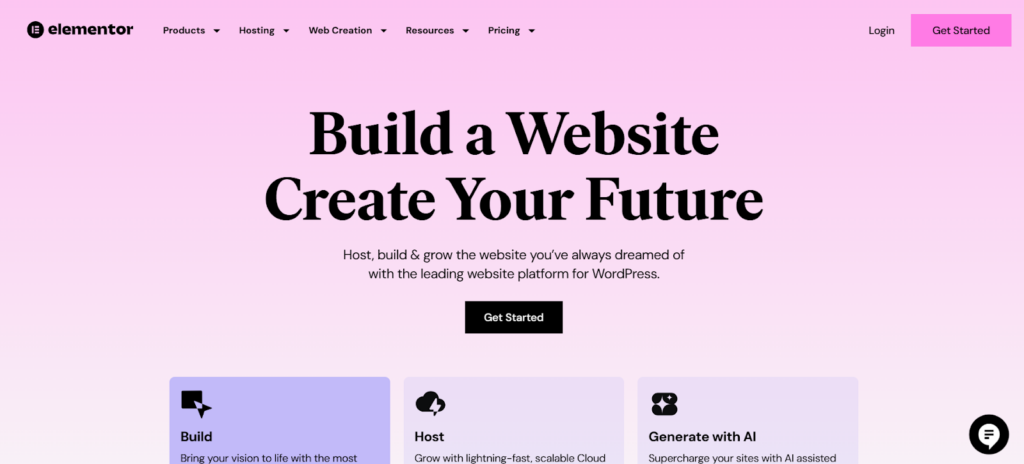
Premium Web Design Packages
Premium web design packages are the top-tier option. They’re for businesses and people who want the best possible website with all the extras. These packages usually start at $5,000 and can go up to $10,000 or more, depending on how complex your site needs to be.
What You Get:
Premium packages go all out. You can expect a completely custom design that matches your brand, along with advanced features like custom animations and interactive parts.
A full online store with lots of products is often included, as well as in-depth SEO work to help you rank high in search results. Many premium packages also offer help creating content for your site, ongoing maintenance, and support, as well as as many rounds of changes as you need.
Who Should Buy This:
Premium packages are ideal for established businesses, large organizations, or anyone with big online goals. If you want to make a strong impression online and stand out from your competition, a premium package might be worth the investment.
Example of a Premium Web Design Package:
For about $8,000, you might get a 20+ page website with a fully custom design. This could include advanced online store features, custom animations and interactive elements, extensive SEO work, content creation (like writing and blog posts), ongoing maintenance and support, and unlimited changes.
Think About a Premium Package
Suppose you need a high-end, fully customized website with advanced features and tools. It’s also a good choice if you’re looking for a complete solution that includes content and upkeep and you have a big budget for your website.
Bonus Tip:
If you like the idea of premium features but want to build the site yourself, check out Elementor Pro. It’s a more advanced version of Elementor with even more design tools and features. You can make amazing websites with it without needing to know how to code.
E-commerce Web Design Packages
Online stores need websites that look good and work well. E-commerce web design packages help businesses sell products or services online. These packages usually cost between $3,000 and $10,000 or more, depending on the size of your store and the features you want.
What You Get:
E-commerce packages give you the tools to build a successful online store. You’ll get ways to show your products, let customers buy them, and manage your inventory. Most packages include:
- A catalog to show your products
- A shopping cart for customers to use
- Secure ways to accept payments
- Tools to manage shipping
- A system to track your inventory
You might also get features like customer accounts, order tracking, and product reviews. Some packages offer extra marketing tools, like email campaigns or ways to remind customers about items they left in their cart.
Who Should Buy This:
Any business that wants to sell online needs an e-commerce package. It doesn’t matter if you’re a small shop or a big company. These packages help you show off your products, take payments safely, and run your online store smoothly. If you’re serious about selling online, a good e-commerce website is a must-have.
Example of an E-commerce Web Design Package:
For about $6,000, you might get:
- A 15-page website with online store features
- A product catalog that can hold as many items as you need
- A shopping cart and safe checkout process
- Ways to accept payments and handle shipping
- A system to manage your inventory
- Customer accounts and order tracking
- Product reviews and ratings
- Basic SEO to help people find your store online
- Three rounds of changes
Think About an E-commerce Package If:
- Do you want to sell products or services online
- You need a safe and working online store
- You want to keep track of your inventory and orders easily
- You need things like customer accounts and product reviews
Bonus Tip: If you want your online store to run really well, check out Elementor’s eCommerce Hosting. It’s a special type of hosting made just for online stores. It uses Google Cloud, which means your site will load fast and can handle lots of shoppers at once. This is really important during busy shopping times like holidays.
Extra Web Design Services and Their Costs
Besides the main features of web design packages, you can get other services to make your website work better, perform well, and succeed. These services often have their own prices. You can add them to your package or buy them separately.
Search Engine Optimization (SEO)
SEO helps your website show up higher in search results so more people can find you online. SEO services might include:
- Finding the right keywords
- Making your web pages better for search engines
- Checking your site for technical issues
- Getting other sites to link to yours
Cost: SEO can cost from a few hundred to several thousand dollars per month. The price depends on the amount of work needed and the competitiveness of your industry.
Writing Content
Good content keeps people interested and helps turn visitors into customers. Professional writers can create:
- Catchy website text
- Blog posts
- Product descriptions
- Other marketing materials
Cost: You usually pay for content by the project or by the hour, and the price changes based on the writer’s experience.
Keeping Your Website Running Smoothly
Websites need regular care to work well and stay safe from threats. Ongoing maintenance plans give you peace of mind. They usually involve:
- Regular updates
- Backing up your site
- Security checks
Cost: You typically pay monthly or yearly for maintenance. The price depends on how much support you get and what services you get.
Redesigning Your Website
As your business grows and online trends change, you might need to update your website’s look or how it works. A redesign can include:
- Changing how your site looks
- Making it easier for people to use
- Adding new features
Cost: Redesigns can cost from a few thousand to tens of thousands of dollars, depending on how much you want to change.
Other Add-on Services
Depending on what you need, you might also think about:
- Making your online store better: Adding things like better ways to filter products, subscription services, or letting multiple sellers use your site.
- Custom development: Creating unique features just for your site.
- Making your site accessible: Ensuring people with disabilities can use your site.
- Conversion rate optimization (CRO): Improving how well your site turns visitors into customers.
- Managing paid ads: Running and improving online advertising campaigns.
Cost: These extra services can vary a lot in price. It depends on how complex the work is and how much you need to be done.
Website Maintenance Plans and Pricing
Think of website maintenance as taking care of your car. Just as your car needs regular oil changes to run well, your website needs ongoing care to stay secure, up-to-date, and working its best.
What You Get
A website maintenance plan usually includes the following:
- Updating software
- Watching for security issues
- Backing up your site
- Fixing problems
Some plans also update your content, speed up your site, or make small design changes. How often these things happen depends on the plan. Some check your site weekly or monthly, while others help when you ask.
Who Needs This
Maintenance plans are good for anyone who wants to keep their website in top shape without worrying about the technical stuff. They’re really helpful for businesses that rely a lot on their website. If your site goes down or gets hacked, it can hurt your income and reputation.
Example of a Website Maintenance Plan
Price: $100 per month
What’s Included:
- Monthly software updates
- Weekly backups
- 24/7 security watching
- Checking if your site is up
- Help when you need it
- Small content updates (like changing text or images)
Think About a Maintenance Plan If:
- You want to make sure your website stays secure and up-to-date
- You don’t have time or know-how to do maintenance yourself
- You want to feel sure your website is being looked after
- Your business depends a lot on your website
Bonus Tip: If you want an easy way to keep your website running smoothly, check out Elementor’s WordPress Hosting. It updates your site automatically, backs it up every day, and has strong security. This means you can focus on growing your business instead of worrying about your website.
How Web Designers Charge for Their Work
Now that we know about different web design packages and what affects their prices let’s look at how designers charge for their work. Understanding these pricing models can help you plan your costs and discuss your project with designers.
1. Hourly Rates
This is a simple way to pay. You pay the designer for the time they spend on your project. Hourly rates can be very different depending on how experienced the designer is, what they’re good at, and where they’re located. You might pay anywhere from $50 to $200+ per hour.
This method of payment is flexible, but it’s important to talk clearly about what you want and set goals for each part of the project. This helps avoid the project becoming bigger than you planned and costing more than you expected.
2. Fixed Project Fees
In this model, the designer gives you one price for the whole project. They base this on what you’ve asked them to do.
This can help you know exactly what you’ll spend, but make sure you get a detailed agreement that lists everything they’ll do. It’s also important to understand any extra costs for changes or revisions.
3. Retainer-Based Pricing
With this model, you pay a set fee regularly (usually every month) for ongoing web design work. This is often used to keep your website running well, update content, and get design help when you need it.
This can give you steady access to a designer and keep your website in good shape.
4. Value-Based Pricing
This model considers how much the website could help your business, not just how much time or work it takes to make. It considers things like how much money the website might help you make and how it can help you reach your business goals.
This way of pricing can be less predictable at first, but it can be good for both you and the designer. You both want the website to do well.
Choosing the Right Web Design Package for You
Let’s explore the factors to consider when making this decision.
1. Figure Out What You Need
Before you start looking at web design packages, you need to know what you want your website to do.
Ask yourself: What do I want my website to achieve? Am I trying to get leads? Do I want to sell things online? Do I want to show off my work? Do I just want to give information? Knowing your goals will help you figure out what features your website needs.
Next, think about who will use your website. Who are you trying to reach? What do they need and expect? Understanding your audience will help you make a website that speaks to them.
Finally, make a list of the specific things you need your website to do. Do you need a blog, contact forms, photo galleries, links to your social media, or an online store? Be as detailed as you can. This will help you compare different web design packages and pick the best one for you.
2. Set a Budget That Makes Sense
Let’s talk about money. Your website is an investment in your online presence. It’s important to set a budget that fits your business goals and what you can afford. Think of your website as a tool to help your business grow, and plan your spending accordingly.
Before you decide on a number, think about what you’re comfortable spending. It’s tempting to go for the cheapest option, but remember: you often get what you pay for. A badly designed website can hurt your brand and drive customers away. On the other hand, a well-made website can make you look more professional, attract more visitors, and help you make more money.
When you’re setting your budget, focus on the most important features first. Figure out what your website absolutely must have, and put your money towards those things first. You can always add more features later when you have more money. It’s also smart to think about ongoing costs, like registering your domain name, hosting your website, and maintaining your website. These help keep your website running over time.
Here are some practical tips for setting a sensible budget:
- Do your research by getting quotes from several web designers to understand typical prices.
- Make a priority list by writing down the most important features of your website and budgeting for those first.
- Be flexible and consider starting with a basic package and adding more features later, as you can afford them.
- Think long-term by including ongoing costs like domain registration, hosting, and maintenance in your budget.
Remember, your website is an investment in your business’s future. By setting a sensible budget and focusing on the most important features, you can create a website that helps your business without spending too much.
How to Choose the Right Web Designer
Once you know what you want for your website and how much you can spend, it’s time to look at different web designers. Remember, not all designers are the same. Each has their own strengths and ways of working.
What to Look For in a Web Designer
- Experience and Skills
Check if they’ve made websites like the one you want. Look at their past work to see if their style fits what you’re imagining. Don’t be shy – ask them about things like online stores, making your site show up in search results, or creating a site that’s easy to use.
- Good Communication
Pick a designer who listens to you and explains things clearly. You should feel comfortable asking questions and sharing your ideas. A good designer will work with you throughout the process.
- Clear Pricing
Be careful of designers who need to be clearer about their prices or have hidden fees. Look for those who tell you exactly what you’re paying for. This helps avoid surprise costs later.
- What Others Say
Read what other clients say about the designer. Look for comments about how well they communicate, manage projects, and the quality of their work.
- Other Things to Think About
- How quickly can they finish your website?
- What help do they offer after the site is built?
- What tools do they use to make websites?
- Can they make your site bigger as your business grows?
By thinking about all these things, you can find a web designer that’s right for you and your business.
Understanding the True Value of Web Design
When looking at web design packages, it’s easy to focus only on the price. But it’s important to think about what you’re really getting for your money.
Here’s an example: A cheaper package might seem good at first, but if it needs to include important features or the designer doesn’t offer much help, you might spend more money later to fix problems or add things you need.
On the other hand, a package that costs a bit more might give you better quality, more help when you need it, and a website that’s easier for people to use. In the long run, this could help your business more.
So, what should you look at to understand the real value of a web design package?
- Quality of the Work: Look closely at the designer’s past work. Do their websites look professional and modern? Are they easy to use? A well-designed website can make your business look good and help your customers, so quality is really important.
- Help When You Need It: How quickly does the designer respond when you have questions? Will they be there to help if something goes wrong? Good support can save you time and stress later on.
- How It Can Help Your Business: Consider how the website can help you reach your goals. Will it bring in new customers, help you sell more, or make more people aware of your business? A good website can do all these things, making it worth the investment.
By thinking about these things, you can make a smart choice that fits your budget and helps your business in the long term. Remember, the cheapest option isn’t always the best value. Spending more on a good web design package can pay off in the future.
Hidden Costs in Web Design: What to Watch Out For
When you’re looking at web design packages, some costs might not be obvious at first. It’s important to know about these, so you don’t end up spending more than you planned.
- Domain Name and Hosting: Some packages include these, but others don’t. A domain name (your website’s address) usually costs about $10-20 each year. Hosting (where your website lives online) can cost from $5 to $50 or more each month, depending on what you need.
- Special Tools and Designs: Some designers use special plugins or themes to make your site work or look a certain way. These might cost extra, either once or regularly. Make sure to ask about this.
- Online Store Fees: If you’re selling things on your website, watch out for fees on each sale. These are usually a percentage of what you sell and can add up quickly.
- Keeping Your Site Updated: Some packages include basic updates, but others might charge extra for this. Make sure you know what’s included and budget for any ongoing work your site might need.
- Creating Content and Helping People Find Your Site: If you need help writing your website’s content or making sure people can find your site in search engines, these might cost extra. Ask what’s included in the package and plan for any additional services you might need.
By knowing about these possible extra costs, you can avoid surprises and choose a web design package that truly fits your budget. Remember, it’s okay to ask your web designer about any possible extra costs before you decide. A good designer will be happy to explain everything clearly.
How to Talk About Price with Web Designers
Talking about money with web designers can feel scary, but it’s important. You want to get the best value for your money. The good news is that web design prices are often flexible. You can usually talk about the price, especially if you know what you need and how much you can spend.
Tips for Talking About Price
- Do Your Homework: Before you talk to designers, find out what others charge for similar work. This will help you determine whether the price is fair.
- Be Open About Your Budget: Tell the designer how much you can spend and explain what you want your website to do. This helps the designer understand your needs and maybe offer a package that fits your budget.
- Ask Questions: If something needs to be clarified, ask about it. Make sure you know what’s included in the price and if there might be extra costs.
- Suggest Changes: If the price is too high, ask if you can change some things. Maybe you could have fewer pages or use a pre-made design instead of a custom one. You could also ask about payment plans or discounts if you pay all at once.
- Be Respectful: Remember, talking about price is a two-way street. Be polite and professional. Be ready to compromise to find a deal that works for both of you.
- Get Help if You Need It: If you’re not comfortable talking about price, you could ask a business advisor or consultant to help you.
Picking the Right Web Design Package
Now that you know about prices, let’s discuss choosing the right package for you. This is where you use what you learned about your website goals, what you need, and how much you can spend. Remember, the best package is only sometimes the most expensive one or the one with the most features. It’s the one that best fits your needs and budget.
Match Your Goals and Budget
Start by reviewing your website goals and needs again. If you’re a small business that just wants a simple website to showcase your work, a basic package might be enough. But if you want to sell things online and have big sales goals, you’ll need an e-commerce package.
Your budget is important too. Be realistic about what you can afford. Focus on the features that are most important for your website’s success. Don’t spend too much on extra features you might not need. You can always add more later as your business grows.
Think About Your Tech Skills
If you’re good with computers and like doing things yourself, try a website builder like Elementor. It lets you drag and drop parts of your website into place. You can make a good-looking website without knowing how to code. This can save you money, especially if you have a small project or a tight budget.
But if you need to be more tech-savvy or would rather let experts handle it, a full-service web design package might be better. This gives you more time to focus on your business. It also means your website will be built by people who know the latest design trends and the best ways to do things.
Plan for the Future
When you choose a web design package, think about the future, not just right now. Will you need to add new features later? Will you need help keeping your website running? Choosing a package that can grow with you can save you time and money in the long run.
In the end, the right web design package is one that fits your goals, budget, and tech skills. If you think carefully about what you need and do your research, you can find a package that helps you make a website that works well for your business and helps it grow.
Elementor: Making Website Design Easy
Making a website can seem hard, especially if you need to improve with computers. That’s where Elementor helps. It’s a tool that makes building websites easier. You don’t need to know complicated computer code to use it.
Key Features of Elementor:
- Easy to Use: You can drag and drop parts of your website into place.
- Ready-Made Designs: It has many pre-made designs you can use and change.
- Lots of Tools: You can add things like slideshows, forms, and moving pictures easily.
- Help When You Need It: Many people use Elementor so that you can find help and advice online.
With Elementor, you can make your website look just how you want, even if you’ve never made a website before.
Elementor’s Smart Helper Tools
Elementor doesn’t just help you build websites. It also has smart tools that use artificial intelligence (AI) to make your job even easier.
Here’s what these smart tools can do:
- AI Copilot: This is like having a helper who gives you ideas as you work. It can suggest layouts and even create whole parts of your website based on what you tell it you want.
- Text Helper: Need help with what to write? The AI can help you create catchy headlines and interesting paragraphs. You just give it a few ideas, and it writes text that matches your style.
- Picture Maker: Need a unique picture? Describe what you want, and the AI can create an image for you. You can even tell it what style and colors to use.
These smart tools make Elementor great for both new and experienced website makers. They help you work faster and generate new ideas without needing to know complicated code.
Elementor Hosting: A Place for Your Website
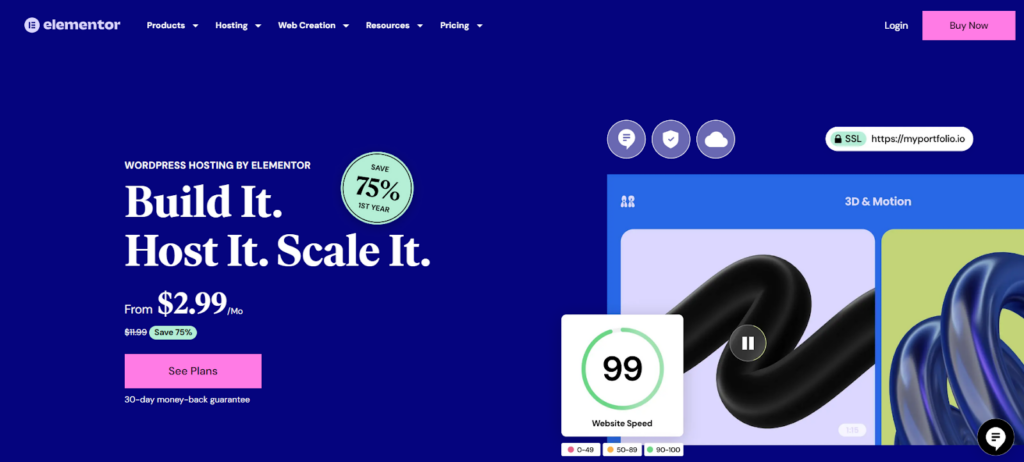
After you make your website with Elementor, you need a place to put it on the internet. This is called hosting. Elementor offers its own hosting service, which is like a special home for your website.
Here’s why Elementor Hosting is good:
- Made for Elementor: It works perfectly with the websites you make using Elementor.
- Fast and Can Grow: It uses Google Cloud, which means your website will load quickly. If more people start visiting your site, it can handle that, too.
- Keeps Your Site Safe: It has strong protection against hackers and other online threats.
- Easy to Use: Elementor works smoothly. You can test changes before making them live on your site.
- Help When You Need It: If you have problems, there are experts available to assist you 24/7.
By using Elementor Hosting, you don’t have to worry about technical issues. You can focus on making your website look great and work well for your visitors.
How to Build Your Website with Elementor
Now that you know about web design packages and costs and are interested in Elementor, let’s discuss how to use it. We’ll break it down into easy steps so you can create your website without stress.
Step-by-Step Guide to Using Elementor
- Pick a Template: Elementor has many ready-made designs for different types of websites. Whether you want a blog, a portfolio, or an online store, you’ll find a design that fits. Choose one you like that matches your brand. Don’t worry, you can change it later.
- Add and Arrange Parts: This is the fun part! You can drag different parts of your website where you want them. Add things like headings, text, pictures, videos, and buttons. You’re in charge of how your website looks.
- Use Widgets: Widgets are special tools in Elementor. They add cool features to your site, like contact forms, social media feeds, and customer reviews. There are over 100 widgets to choose from. They help make your website more interesting for visitors.
- Make It Look Good: Elementor lets you change how everything looks. You can pick colors, fonts, and spacing. You can even add moving parts to make your site more eye-catching.
- Make Sure It Works on Phones: These days, lots of people look at websites on their phones. Elementor helps make sure your site looks good on all devices. You can see how it will look on different screens and fix anything that doesn’t look right.
- Put It Online: When you’re happy with your design, click the publish button. Your website is now live for everyone to see! But don’t worry; you can always go back and make changes later as your business grows.
Building a website with Elementor is fun and rewarding. It’s easy to use, has lots of features, and even uses smart AI tools to help you. You can make a great website that people will remember.
Common Questions About Web Design Costs
Here are some questions people often ask about web design packages and how much they cost:
Q: How much does a simple website cost? A: A basic website usually costs between $500 and $2,000. This typically includes a few main pages, a pre-made design, and simple features like contact forms and photo galleries.
Q: What makes an online store website more expensive? A: Online store websites cost more because they’re more complex. Things that affect the price include:
- How many products do you sell
- How do you take payments
- Shipping options
- How you manage your inventory Expect to pay between $3,000 and $10,000 or more for a good online store website.
Q: Is it better to hire one person or a company to design my website? A: Both have good and bad points. One person might give you more personal service and maybe cost less. A company often has more experts and resources. The best choice depends on what you need, how much you can spend, and how big your project is.
Q: How often should I update my website’s design? A: It’s a good idea to freshen up your website design every 2-3 years. This keeps it looking modern and interesting. But if your business changes a lot or your website isn’t working well, you should update it sooner.
Q: What extra costs should I watch out for when getting a website made? A: Some costs that people often forget about include:
- Buying your website address (domain name)
- Paying for website hosting
- Buying special tools or designs (plugins or themes)
- Fees for selling things online
- There are ongoing costs to keep your site updated and running well. When talking to website designers, Make sure to ask about these possible extra costs.
Wrapping Up
We’ve discussed many things related to web design packages and costs. We’ve also examined different options for various needs and budgets, from simple websites to fancy ones for big business goals.
The key to picking the right web design package is to:
- Know what you need
- Set a realistic budget
- Look at the value different designers offer
Don’t be shy about asking questions, comparing options, and talking about prices to get the best deal.
If you want an easy-to-use tool that gives you lots of design choices, cool features, and good hosting, consider trying Elementor. It’s user-friendly, has many ready-made designs, and uses smart AI tools. Elementor helps you make a great-looking website that showcases your brand and helps your business.
Looking for fresh content?
By entering your email, you agree to receive Elementor emails, including marketing emails,
and agree to our Terms & Conditions and Privacy Policy.
